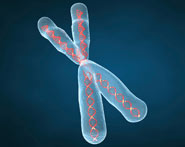


 النبات
النبات
 الحيوان
الحيوان
 الأحياء المجهرية
الأحياء المجهرية
 علم الأمراض
علم الأمراض
 التقانة الإحيائية
التقانة الإحيائية
 التقنية الحيوية المكروبية
التقنية الحيوية المكروبية
 التقنية الحياتية النانوية
التقنية الحياتية النانوية
 علم الأجنة
علم الأجنة
 الأحياء الجزيئي
الأحياء الجزيئي
 علم وظائف الأعضاء
علم وظائف الأعضاء
 الغدد
الغدد
 المضادات الحيوية
المضادات الحيوية|
Read More
Date: 20-11-2020
Date: 9-3-2021
Date: 15-12-2015
|
The trp Operon Is Also Controlled by Attenuation
KEY CONCEPTS
- An attenuator (intrinsic terminator) is located between the promoter and the first gene of the trp cluster.
- The absence of Trp-tRNA suppresses termination and results in a 103 increase in transcription.
A complex regulatory system of repression and attenuation is used in the E. coli trp operon (where attenuation was originally discovered). As discussed in the previous section The trp Operon Is a Repressible Operon with Three Transcription Units, the first level of control of gene expression is that the operon is negative repressible, which means that it is prevented from initiating transcription by its product, the free amino acid tryptophan.
Attenuation is the second level of control. A region in the 5′ leader of the mRNA called the attenuator contains a small open reading frame (ORF). Attenuation in the E. coli trp operon means that transcription termination is controlled by the rate of translation of the attenuator ORF. This allows E. coli to also monitor the second pool of tryptophan, that of Trp-tRNA. High levels of Trp-tRNA will attenuate or terminate transcription, whereas low levels will allow the trpEDCBA operon to be transcribed. This is accomplished by changes in secondary structure of the attenuator RNA that are determined by the position of the ribosome on mRNA.
FIGURE 1shows that termination requires that the ribosome translate the attenuator. When the ribosome translates the leader region, a termination hairpin forms at terminator 1. When the ribosome is prevented from translating the leader, though, the termination hairpin does not form, and RNA polymerase transcribes the coding region. This mechanism of antitermination therefore depends on the level of Trp-tRNA to influence the rate of ribosome movement in the leader region.

FIGURE 1. Termination can be controlled via changes in RNA secondary structure that are determined by ribosome movement.
Attenuation was first revealed by the observation that deleting a sequence between the operator and the trpE coding region can increase the expression of the structural genes. This effect is independent of repression: Both the basal and derepressed levels of transcription are increased. Thus, this site influences events that occur after RNA polymerase has set out from the promoter (irrespective of the conditions prevailing at initiation).
Termination at the attenuator responds to the level of Trp-tRNA, as illustrated in FIGURE 2 . In the presence of adequate amounts of Trp-tRNA, termination is efficient. With low levels of Trp-tRNA, however, RNA polymerase can continue into the structural genes.

FIGURE 2. An attenuator controls the progression of RNA polymerase into the trp genes. RNA polymerase initiates at the promoter and then proceeds to position 90, where it pauses before proceeding to the attenuator at position 140. In the absence of tryptophan, the polymerase continues into the structural genes (trpE starts at +163). In the presence of tryptophan, there is ~90% probability of termination to release the 140-base leader RNA.
Repression and attenuation respond in the same way to the levels of the two pools of tryptophan. When free amino acid tryptophan is present, the operon is repressed. When tryptophan is removed, RNA polymerase has free access to the promoter and can start transcribing the operon. When Trp-tRNA is present, the operon is attenuated and transcription terminates. When the pool of tryptophan bound to its tRNA is depleted, the RNA polymerase can continue to transcribe the operon. Note that the pool of free tryptophan may be low and allow transcription to begin, but that if the Trp-tRNA is fully charged transcription will terminate. Attenuation has an approximately 10-fold effect on transcription.
When tryptophan is present, termination is effective, and the attenuator allows only about 10% of the RNA polymerases to proceed. In the absence of tryptophan, attenuation allows virtually all of the polymerases to proceed. Together with the approximately 70-fold increase in initiation of transcription that results from the release of repression, this allows an approximately 700-fold range of regulation of the operon.



|
|
|
|
تفوقت في الاختبار على الجميع.. فاكهة "خارقة" في عالم التغذية
|
|
|
|
|
|
|
أمين عام أوبك: النفط الخام والغاز الطبيعي "هبة من الله"
|
|
|
|
|
|
|
خدمات متعددة يقدمها قسم الشؤون الخدمية للزائرين
|
|
|